Elephant West project space by Liddicoat & Goldhill opens in disused petrol station
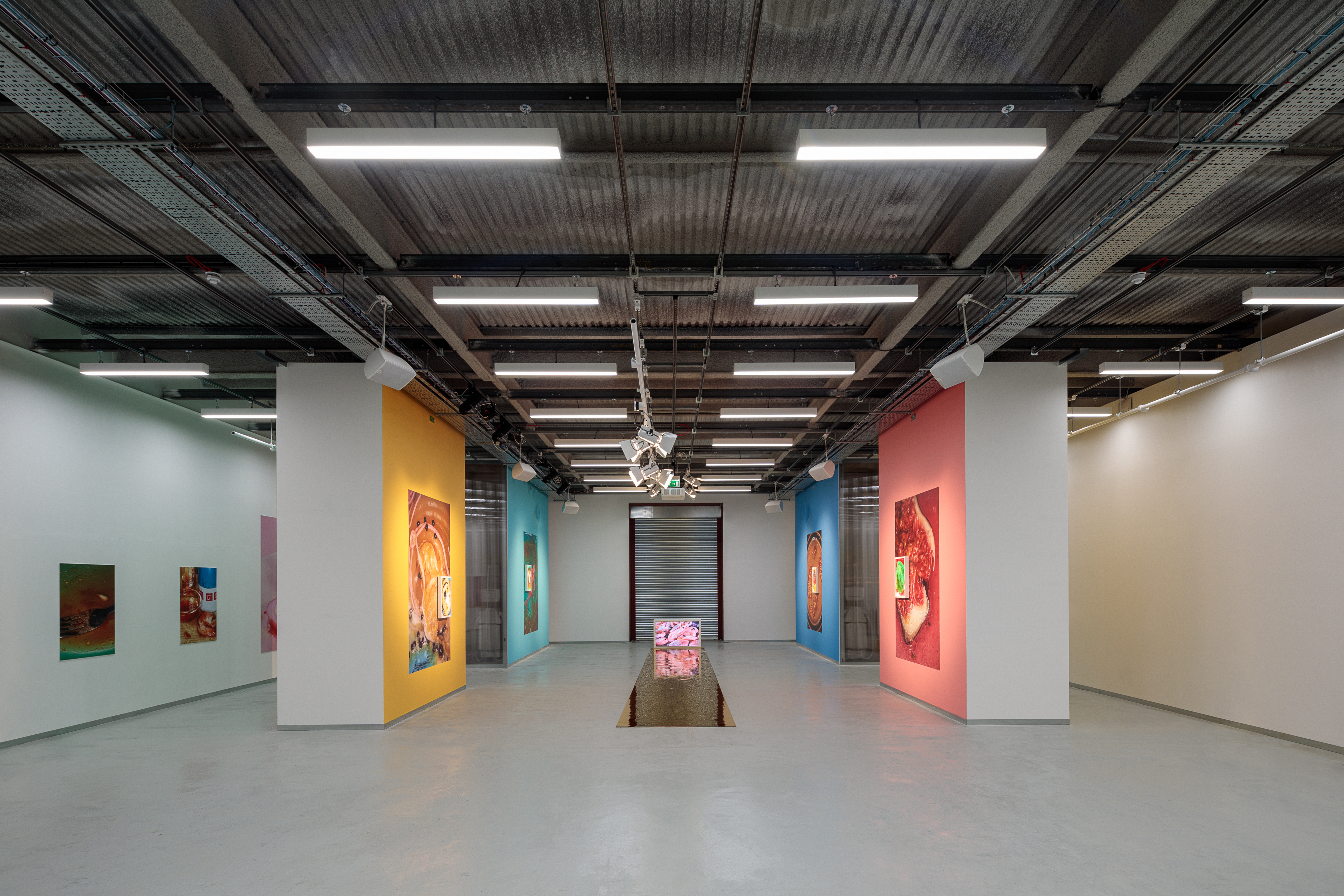
In west London a disused petrol station has been renovated into an industrial style project space by architecture studio Liddicoat & Goldhill. Named ‘Elephant West’, the gallery is a physical manifestation of the visual culture publication Elephant.
The space is a canvas for showcasing emerging artistic talent, ‘environmental takeovers’, immersive experiences and creative programming. High ceilings in the main project space reach the height of the original petrol station and the architecture’s industrial design serves to break down the stiffness of the traditional commercial white cube gallery – the exterior is clad with a pixelated Elefant galvanised steel scaffold planking with vast industrial roller shutter door openings.
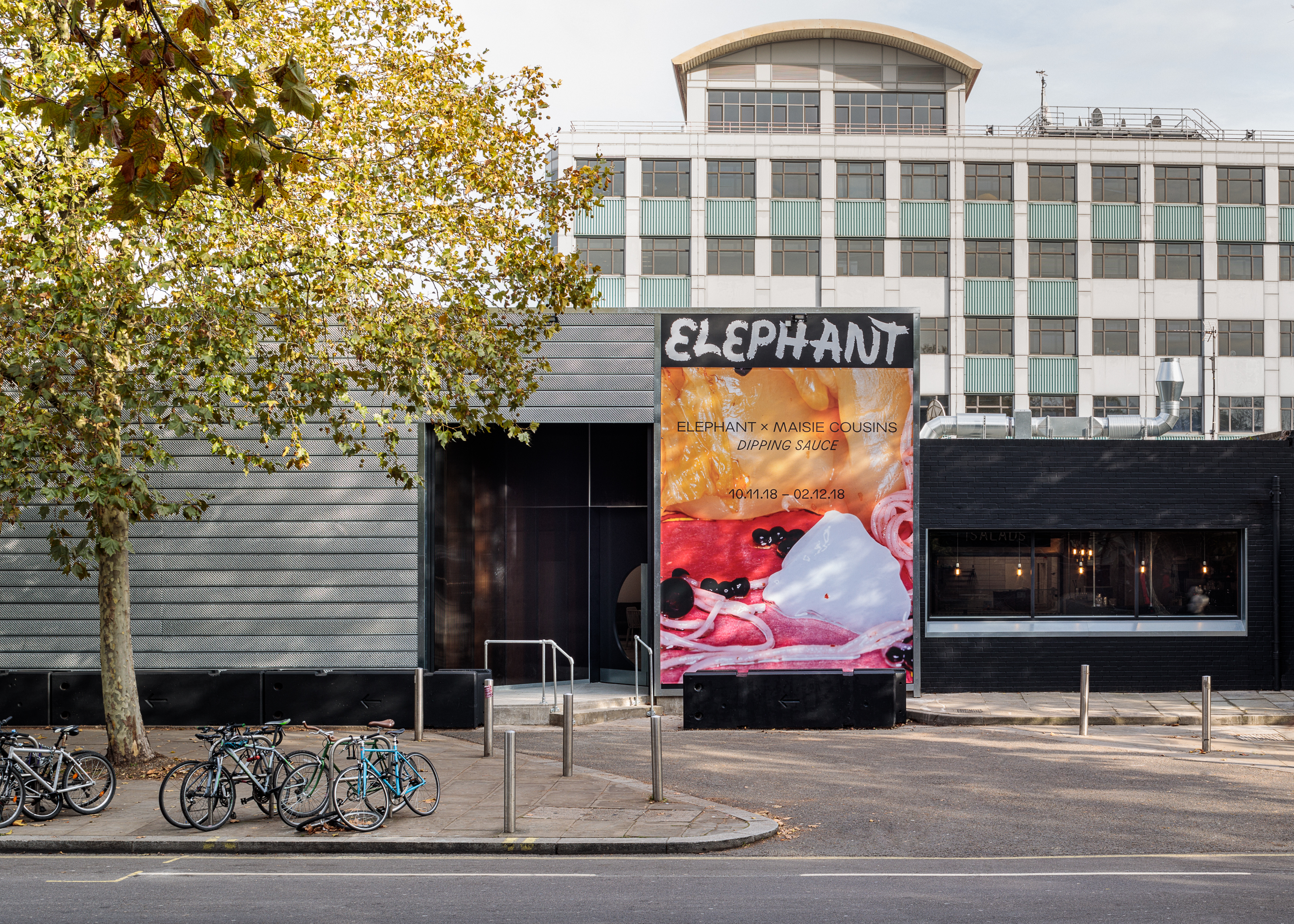
The exterior facade and entrance to Elephant West.
Remnants of the site’s original purpose have been preserved and celebrated in different ways – the petrol pumps have been sprayed white and enclosed behind four giant polycarbonate columns, while manhole covers and concrete bollards highlighted with contrasting epoxy coatings.
‘Our design exposes the latent architectural potential of a derelict, utilitarian building. It also resurrects the foundation myth of White City, which gained its name from dozens of white-painted temporary pavilion-like structures built from the 1908 Franco-British Exhibition,’ say architects Liddicoat & Goldhill.
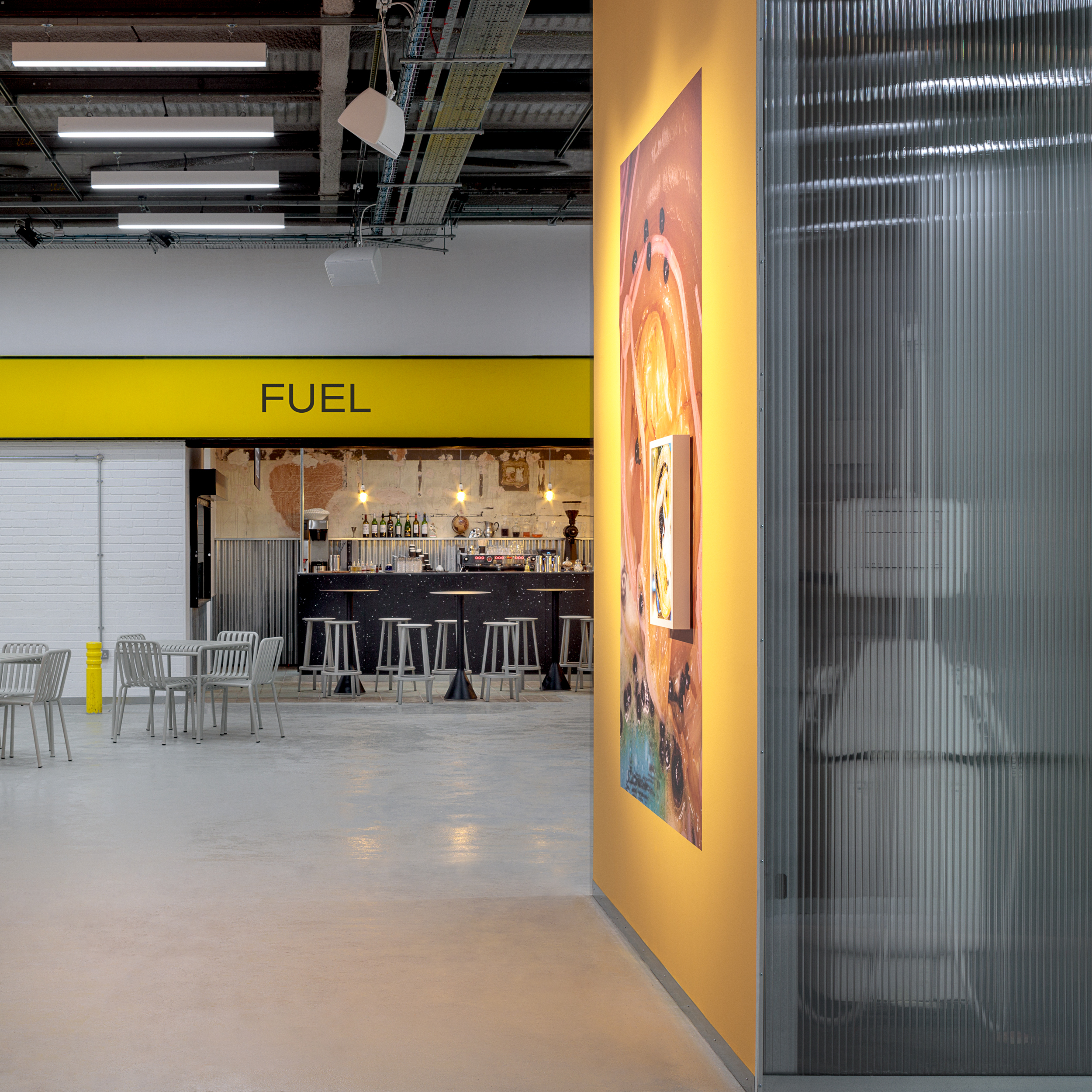
Fuel cafe at Elephant West gallery.
‘Elephant’s tagline is “Life Through Art” and, in keeping with that, the work produced at Elephant West will resonate thematically with the concerns of the wider world rather than the narrower interests of the ‘art world’. Elephant West will turn ordinary life into cutting-edge art,’ says Robert Shore, creative director of Elephant who has spearheaded the project with Becca Pelly-Fry, head curator.
The first exhibition, ‘Dipping Sauce’, is an example of Elephant’s interactive and energetic approach. Huge photographs by west London-based Maisie Cousins show hyper-saturated macro imagery of food, insects, plants and nostalgic objects related to the experience of eating as part of a series of works that celebrate the joy and ceremony of eating, alongside which runs a programme of talks and workshops.
West London is currently experiencing a cultural renaissance, with the former BBC Television Centre redevelopment as an iconic centre piece, the RCA recently opening a White City campus and now Elephant West has jumped upon this new creative wave around White City, with its project space, Fuel café and bar, workstation hub, and shop inside it that will draw people in for many different reasons.
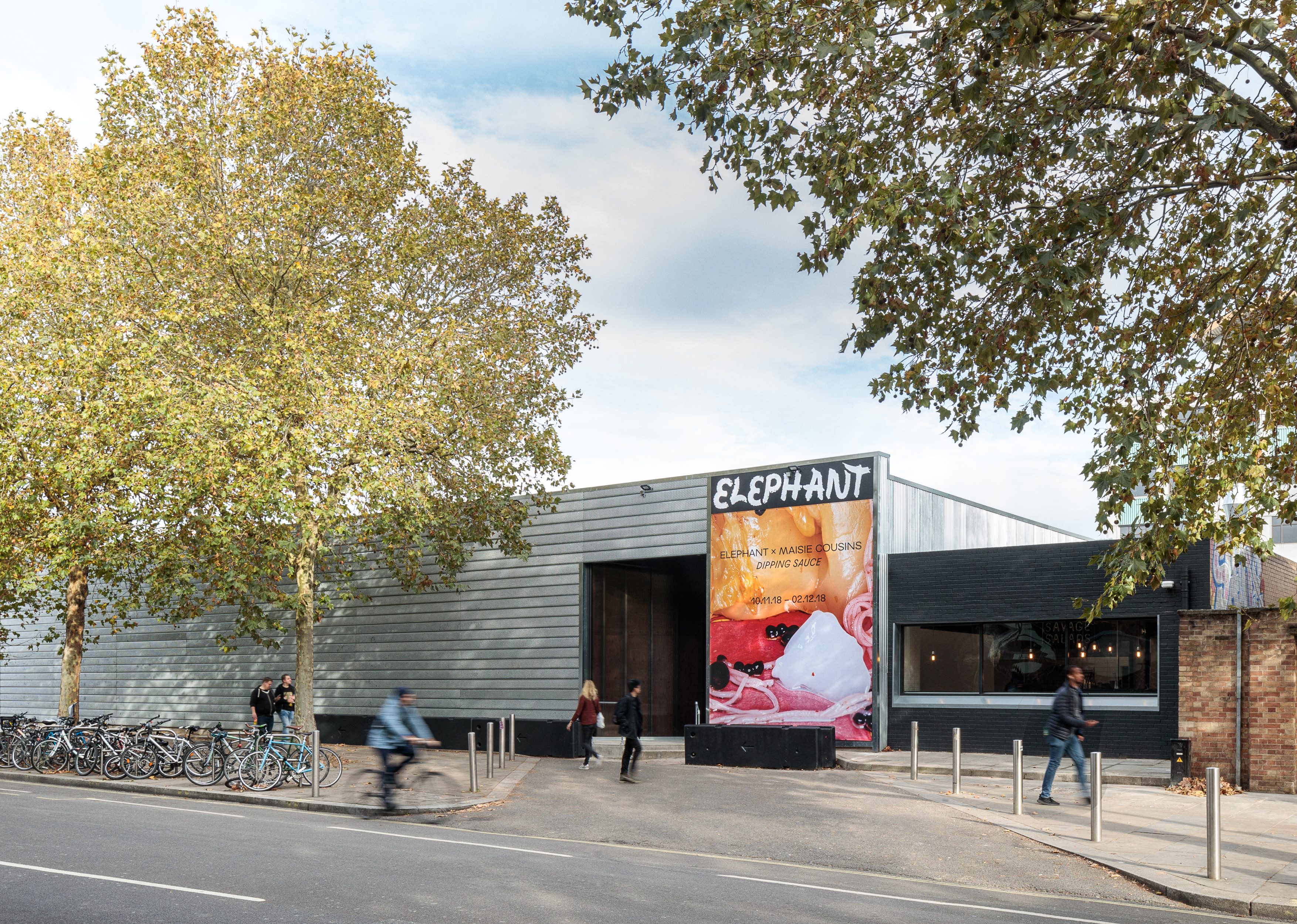
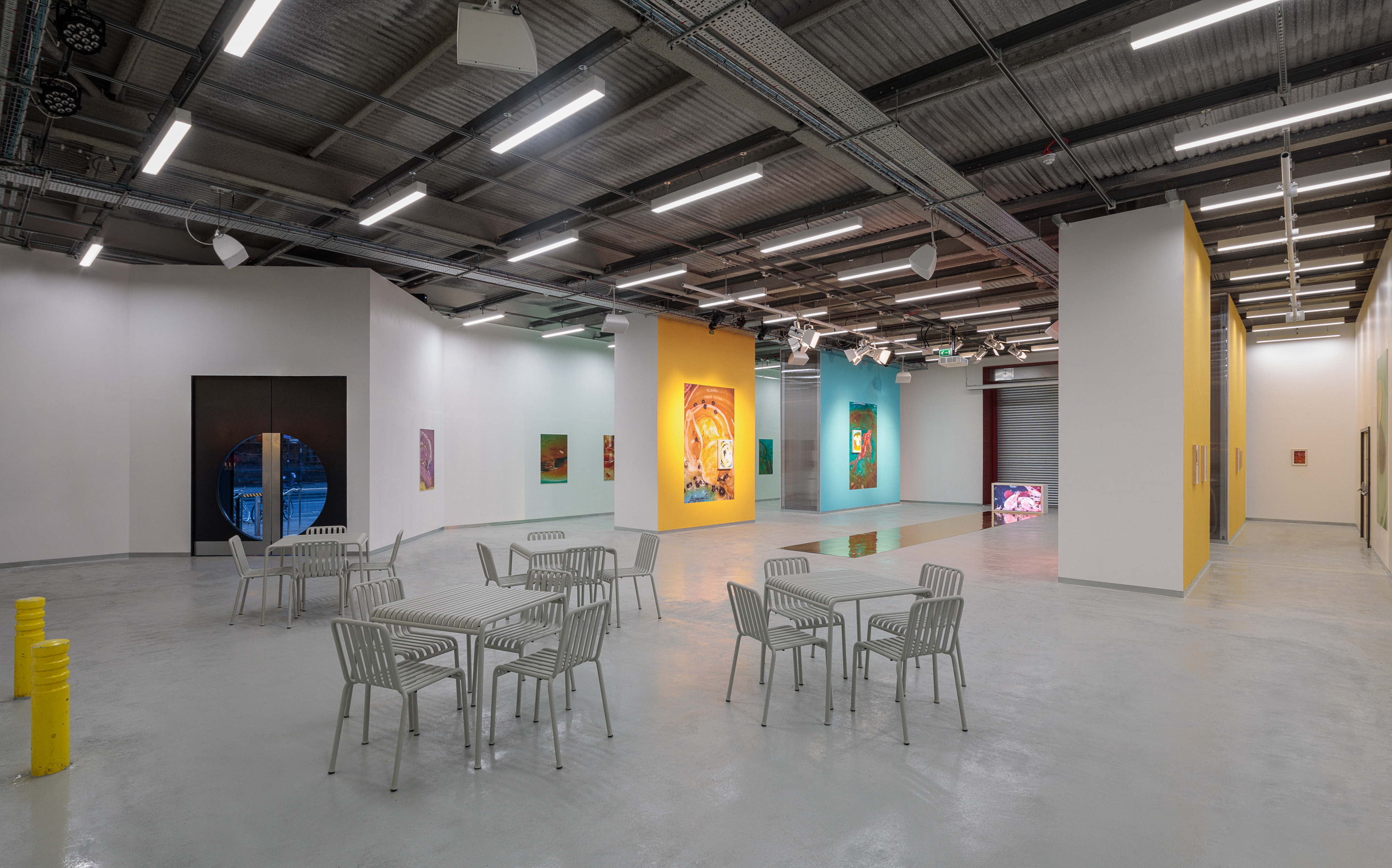
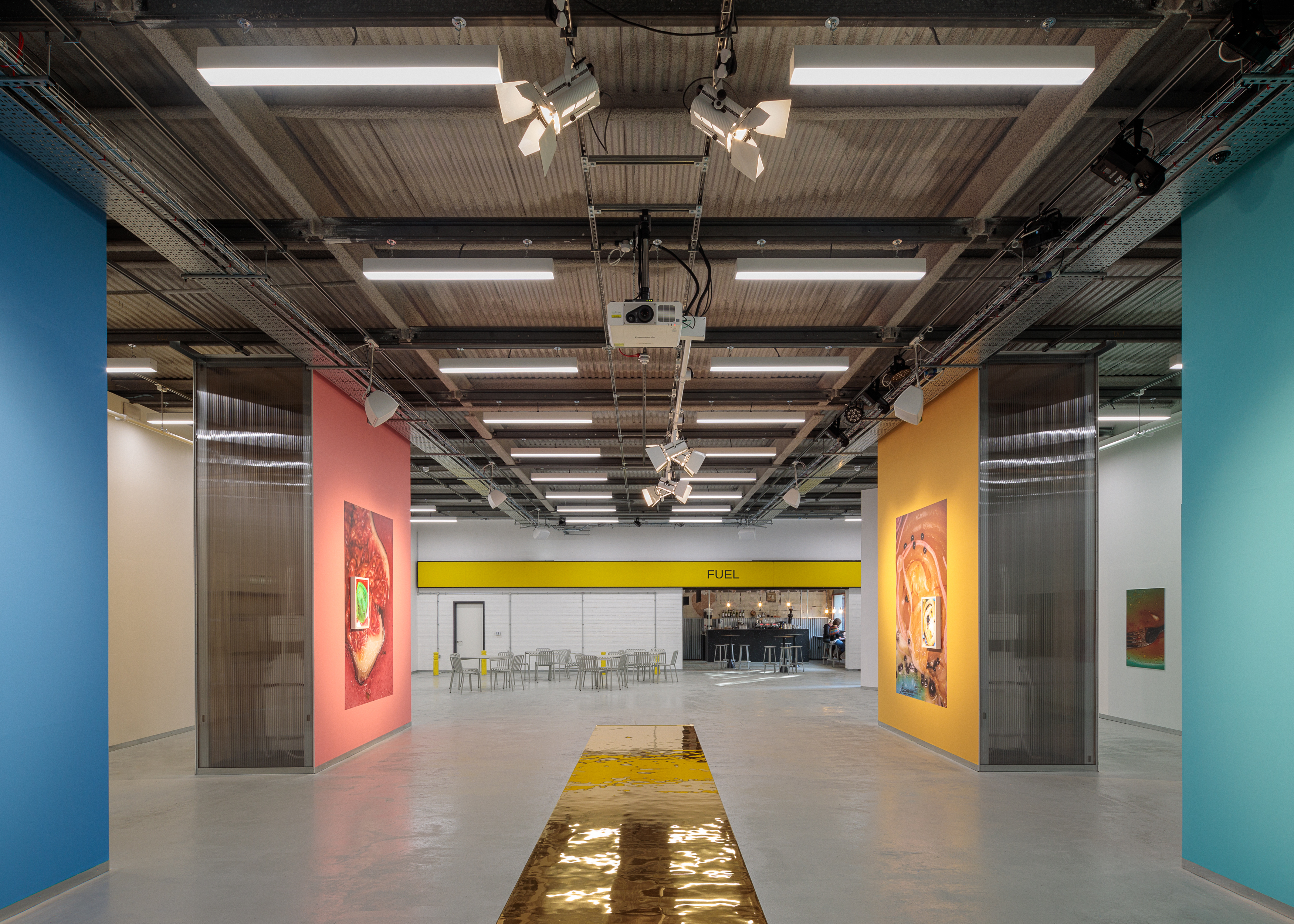
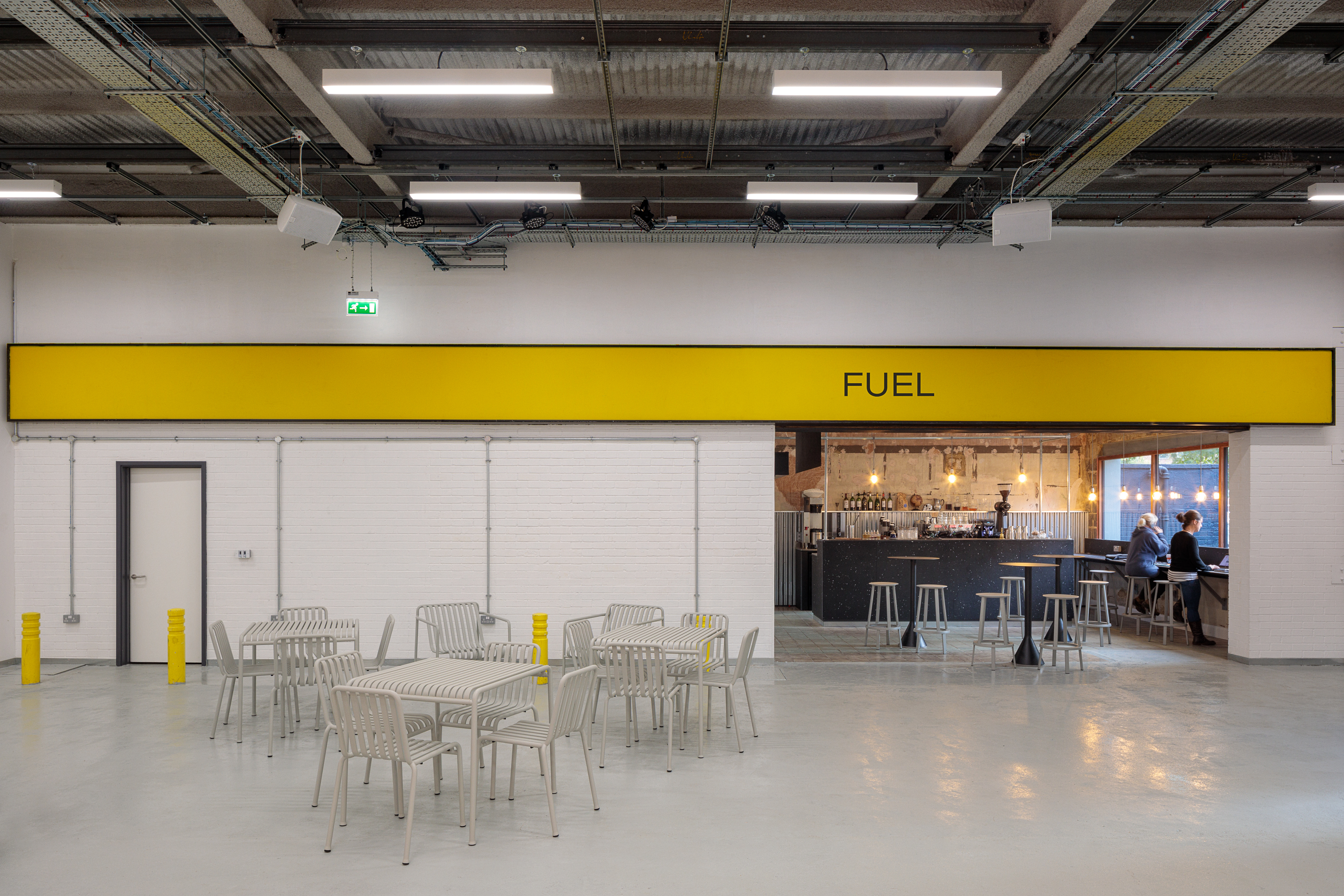
INFORMATION
For more information visit the Liddicoat & Goldhill website
Wallpaper* Newsletter
Receive our daily digest of inspiration, escapism and design stories from around the world direct to your inbox.
Harriet Thorpe is a writer, journalist and editor covering architecture, design and culture, with particular interest in sustainability, 20th-century architecture and community. After studying History of Art at the School of Oriental and African Studies (SOAS) and Journalism at City University in London, she developed her interest in architecture working at Wallpaper* magazine and today contributes to Wallpaper*, The World of Interiors and Icon magazine, amongst other titles. She is author of The Sustainable City (2022, Hoxton Mini Press), a book about sustainable architecture in London, and the Modern Cambridge Map (2023, Blue Crow Media), a map of 20th-century architecture in Cambridge, the city where she grew up.
-
 Put these emerging artists on your radar
Put these emerging artists on your radarThis crop of six new talents is poised to shake up the art world. Get to know them now
By Tianna Williams
-
 Dining at Pyrá feels like a Mediterranean kiss on both cheeks
Dining at Pyrá feels like a Mediterranean kiss on both cheeksDesigned by House of Dré, this Lonsdale Road addition dishes up an enticing fusion of Greek and Spanish cooking
By Sofia de la Cruz
-
 Creased, crumpled: S/S 2025 menswear is about clothes that have ‘lived a life’
Creased, crumpled: S/S 2025 menswear is about clothes that have ‘lived a life’The S/S 2025 menswear collections see designers embrace the creased and the crumpled, conjuring a mood of laidback languor that ran through the season – captured here by photographer Steve Harnacke and stylist Nicola Neri for Wallpaper*
By Jack Moss
-
 The art of the textile label: how British mill-made cloth sold itself to Indian buyers
The art of the textile label: how British mill-made cloth sold itself to Indian buyersAn exhibition of Indo-British textile labels at the Museum of Art & Photography (MAP) in Bengaluru is a journey through colonial desire and the design of mass persuasion
By Aastha D
-
 Artist Qualeasha Wood explores the digital glitch to weave stories of the Black female experience
Artist Qualeasha Wood explores the digital glitch to weave stories of the Black female experienceIn ‘Malware’, her new London exhibition at Pippy Houldsworth Gallery, the American artist’s tapestries, tuftings and videos delve into the world of internet malfunction
By Hannah Silver
-
 Ed Atkins confronts death at Tate Britain
Ed Atkins confronts death at Tate BritainIn his new London exhibition, the artist prods at the limits of existence through digital and physical works, including a film starring Toby Jones
By Emily Steer
-
 Tom Wesselmann’s 'Up Close' and the anatomy of desire
Tom Wesselmann’s 'Up Close' and the anatomy of desireIn a new exhibition currently on show at Almine Rech in London, Tom Wesselmann challenges the limits of figurative painting
By Sam Moore
-
 A major Frida Kahlo exhibition is coming to the Tate Modern next year
A major Frida Kahlo exhibition is coming to the Tate Modern next yearTate’s 2026 programme includes 'Frida: The Making of an Icon', which will trace the professional and personal life of countercultural figurehead Frida Kahlo
By Anna Solomon
-
 A portrait of the artist: Sotheby’s puts Grayson Perry in the spotlight
A portrait of the artist: Sotheby’s puts Grayson Perry in the spotlightFor more than a decade, photographer Richard Ansett has made Grayson Perry his muse. Now Sotheby’s is staging a selling exhibition of their work
By Hannah Silver
-
 From counter-culture to Northern Soul, these photos chart an intimate history of working-class Britain
From counter-culture to Northern Soul, these photos chart an intimate history of working-class Britain‘After the End of History: British Working Class Photography 1989 – 2024’ is at Edinburgh gallery Stills
By Tianna Williams
-
 Celia Paul's colony of ghostly apparitions haunts Victoria Miro
Celia Paul's colony of ghostly apparitions haunts Victoria MiroEerie and elegiac new London exhibition ‘Celia Paul: Colony of Ghosts’ is on show at Victoria Miro until 17 April
By Hannah Hutchings-Georgiou